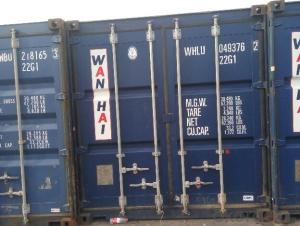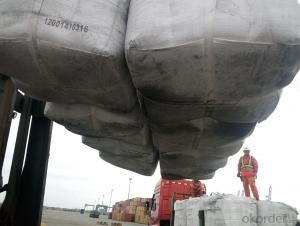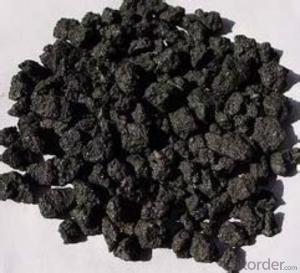Calcined Petroleum Coke with Ash 0.7%max
- Loading Port:
- Shanghai
- Payment Terms:
- TT OR LC
- Min Order Qty:
- 19.8
- Supply Capability:
- 1008 m.t./month
OKorder Service Pledge
OKorder Financial Service
You Might Also Like
Intrduction
Carbon additive to ningxia production of anthracite as raw material, after washing, crushing, high temperature calcination, filter, etc. Craft refined and become.This is after the anthracite calcination generated high carbon content and low volatile component of the new product, is an ideal raw material to make steel.
Calcined Petroleum Coke comes from delayed coke which extracted from oil refinery. Although Calcined Petroleum Coke contains a little bit higher level of sulfur and nitrogen than pitch coke, the price advantage still makes it widely used during steel-making and founding as a kind of carbon additive/carburant.
Features
In the smelting process for reducing agent. Performance: replace the traditional oil carbon additive, decrease the cost of steelmaking. Features: low ash. low sulfur,low phosphorus, high calorific value. High ratio resistance,high mechanical strength,high chemistry activity. It is mainly used for metallurgy reductant inoculants, casting, refractory materials, machinery, electronics and other fields.Steady supply
1) high absorption rate, it can be absorbed up to 90%.
2) absorbed more quickly than other carbon additive; no residue remains in furnace.Good quality
3) low Sulfur, the lowest can reach below 0.20%; low nitrogen, normally below 200ppm (0.02%)
Specifications
CPC | |||
F.C.% | 98.5MIN | 98.5MIN | 98MIN |
ASH % | 0.8MAX | 0.8MAX | 1MAX |
V.M.% | 0.7 MAX | 0.7 MAX | 1 MAX |
SULFUR % | 0. 5MAX | 0. 7MAX | 1MAX |
MOISTURE % | 0.5MAX | 0.5MAX | 1MAX |
Pictures
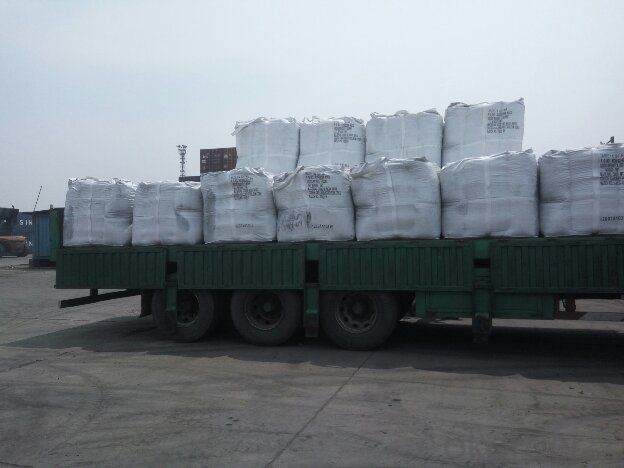
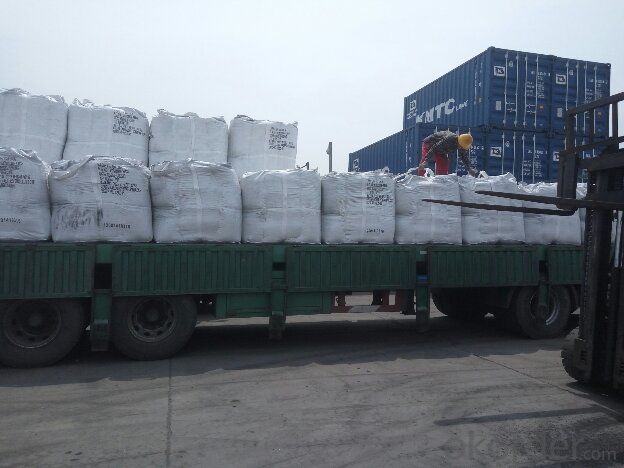
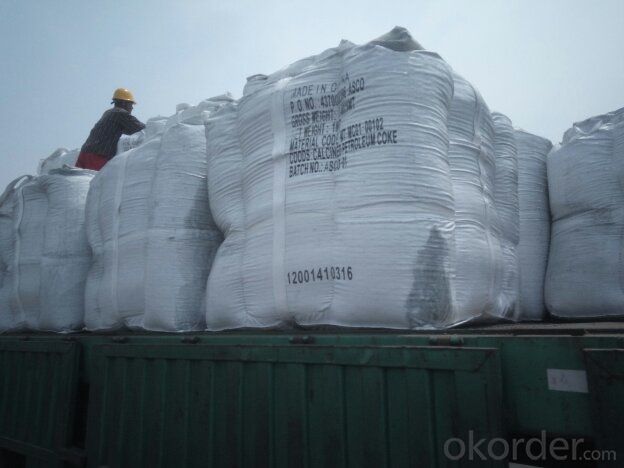

FAQ:
(1)CPC could be as fuel
Petroleum coke is a material relatively low in cost and high in heat value and carbon content with good chemical stability, making it an efficient and costeffective fuel for producing metal, brick and related products.
(2)CPC could be as Graphite Electrodes
Graphite can be produced from lowsulfur needle petroleum coke, which must be heated above 5,432 degrees Fahrenheit.
(3)CPC could be as Anodes
Calcined petroleum coke, often low in sulfur and metallic impurities, is used to make anodes for
the smelting industry.Calcined petroleum coke is mixed with coal tar pitch in the production of
anodes.
- Q: What are the effects of carbon emissions on the stability of volcanic regions?
- The stability of volcanic regions can be influenced by both direct and indirect effects of carbon emissions. At first glance, the direct impact of carbon emissions on volcanic areas seems relatively insignificant. Volcanic eruptions naturally release carbon dioxide (CO2), so the additional emissions from human activities may not have a significant individual effect on the stability of volcanic regions. However, the increased levels of carbon dioxide in the atmosphere can contribute to climate change, which can indirectly affect volcanic activity. Indirectly, the stability of volcanic regions can be affected by climate change resulting from carbon emissions. The rising global temperatures caused by climate change can lead to the melting of glaciers and ice caps. This, in turn, increases the amount of water on the Earth's surface. The additional weight of water in volcanic areas can potentially add pressure to magma chambers and trigger volcanic activity. Moreover, the increased water levels can result in higher levels of rainfall, which increases the risk of landslides and erosion in volcanic regions, potentially destabilizing the area. Additionally, climate change can alter precipitation patterns and create drought conditions, impacting the hydrological cycle. These changes can affect the availability of water for volcanic regions, ultimately influencing their stability. Volcanoes require water for the production of steam and pressure that can lead to eruptions. If there is a lack of water due to prolonged drought conditions, volcanic activity may decrease. However, unpredictable rainfall patterns can result in an excess of water, leading to an increased risk of flash floods and landslides that can destabilize volcanic areas. It is important to acknowledge that the effects of carbon emissions on the stability of volcanic regions are intricate and can vary based on factors such as local geology, volcanic activity, and climate conditions. Although carbon emissions may not directly cause volcanic eruptions, they can contribute to changes in climate patterns that can indirectly impact the stability of volcanic systems. Further research and monitoring are necessary to fully comprehend and quantify these effects.
- Q: How does carbon dioxide affect fuel efficiency?
- Carbon dioxide does not directly affect fuel efficiency. However, the burning of fossil fuels, which releases carbon dioxide, contributes to global warming and climate change. These environmental impacts can lead to stricter regulations on fuel efficiency and encourage the development of more efficient and cleaner energy sources.
- Q: How are fossil fuels formed from carbon?
- Fossil fuels are formed from carbon through a natural process that takes millions of years. The process begins with the remains of plants and animals that lived millions of years ago. These remains, which contain carbon, get buried under layers of sediment in oceans, swamps, and other bodies of water. Over time, the pressure from the layers of sediment and the heat from the Earth's crust cause a process called diagenesis to occur. During diagenesis, the organic matter in the remains undergoes chemical changes, transforming it into a substance known as kerogen. As more layers of sediment continue to accumulate, the temperature and pressure increase further. Eventually, the kerogen undergoes a process called catagenesis, where it is heated to even higher temperatures. This causes the kerogen to break down and transform into liquid and gaseous hydrocarbons, which are the main components of fossil fuels. The liquid hydrocarbons form what is known as crude oil or petroleum, while the gaseous hydrocarbons form natural gas. Both of these fossil fuels can be extracted from the Earth's crust through drilling. In summary, fossil fuels are formed from carbon through a complex and lengthy process involving the burial, pressure, and heat of organic matter over millions of years. This process transforms the carbon-rich remains into hydrocarbons, which become the valuable resources that we use as fossil fuels today.
- Q: What is the thickness of carbon fiber heating?
- A carbon fiber electric heating installation including adiabatic reflective material, galvanized iron, carbon fiber heating cable, cement layer, floor tile or wood flooring and other parts, generally about reflective thermal insulation material 2cm, galvanized iron net and carbon fiber heating cable 1cm, cement layer 2-3cm, tile or wood floors 2cm in general, add up to 7, 8cm. Insulation reflective material is insulation, galvanized iron mesh, cement layer is to protect cable, carbon fiber heating cable is the core component of carbon fiber heating system, play a role in heating.Two, the use of carbon fiber electric heating carbon fiber heating heating cable as the main part, according to the inherent characteristics of the carbon materials, and textile materials with porous and capricious, multi-faceted, the ends of pressure conductive, electric energy can be quickly converted into heat, by far infrared radiation heat to achieve the heating effect, this is the carbon fiber electric heating principle. Carbon fiber electric heating and electric heating are essentially different, the ordinary electric heating is dependent on the resistance wire heating, and the conduction mode of heat conduction, the disadvantage is the electric energy into heat energy conversion rate is low carbon fiber electric heating.
- Q: What is carbon fiber reinforced polymer?
- Carbon fiber reinforced polymer (CFRP) is a composite material that combines carbon fibers with a polymer matrix, resulting in a strong and lightweight material. Carbon fibers are thin, strong, and composed of carbon atoms bonded together in a crystalline structure. These fibers are embedded in a polymer matrix, typically made of epoxy resin, which binds the fibers together and provides support. The combination of carbon fibers and polymer matrix results in a material that has a high strength-to-weight ratio, making it ideal for various applications. CFRP is known for its exceptional stiffness, strength, and resistance to corrosion and fatigue. It is extensively used in aerospace, automotive, sports equipment, and other industries where lightweight and high-performance materials are required. The unique properties of CFRP make it an excellent alternative to traditional materials like steel, aluminum, and fiberglass, providing superior strength and durability while significantly reducing weight.
- Q: How does carbon dioxide affect textile production?
- Carbon dioxide can have various impacts on textile production. Firstly, the production of carbon dioxide during the manufacturing process of textiles contributes to the overall greenhouse gas emissions, which exacerbates climate change. This can lead to long-term consequences such as extreme weather events, rising temperatures, and sea-level rise, all of which can disrupt the supply chain and production of textiles. Moreover, carbon dioxide emissions from textile production contribute to air pollution, which can have adverse effects on human health. The release of this greenhouse gas can lead to respiratory problems and other respiratory diseases in workers exposed to high levels of carbon dioxide. Additionally, carbon dioxide is often used as a part of the dyeing and finishing process in textile production. This can have negative consequences for the environment as well. Carbon dioxide can contribute to water pollution when it is released into water bodies during the dyeing process, leading to the contamination of water sources and harming aquatic life. Furthermore, the excessive use of carbon dioxide in textile production can also have economic implications. As carbon dioxide is a byproduct of burning fossil fuels, its production is inherently linked to the consumption of non-renewable resources. The reliance on fossil fuels can make textile production vulnerable to price fluctuations, as the cost of carbon dioxide emissions and energy production can vary significantly. To mitigate the negative impacts of carbon dioxide on textile production, various measures can be taken. These include adopting cleaner production techniques and technologies that reduce carbon dioxide emissions, such as the use of renewable energy sources or implementing carbon capture and storage systems. Additionally, investing in sustainable and environmentally-friendly materials, such as organic cotton or recycled fibers, can also help reduce the carbon footprint of textile production. Overall, the reduction of carbon dioxide emissions in textile production is crucial for the industry to become more sustainable and mitigate its environmental and health impacts.
- Q: How is carbon used in the production of textiles?
- Textile production utilizes carbon in multiple ways, encompassing the utilization of carbon fibers, activated carbon, carbon black, and carbon nanotubes. Carbon fibers, for instance, serve as a lightweight and sturdy reinforcement for fabrics, enhancing their durability and performance. Activated carbon, known for its porous nature, finds extensive use in the textile industry due to its ability to adsorb and eliminate undesirable odors and chemicals. Consequently, it is employed in the manufacturing of sportswear, workwear, and specialized textiles where odor control is crucial. Additionally, carbon black, a finely powdered substance composed of carbon particles, functions as a pigment in textile printing and dyeing. By imparting a deep black hue, it is widely employed in the production of garments, upholstery, and other textiles requiring a dark coloration. Moreover, the development of carbon nanotextiles represents an innovative application of carbon in the textile realm. These textiles, fabricated from carbon nanotubes, exhibit exceptional properties such as high electrical conductivity and thermal stability. Consequently, they are ideal for applications involving wearable electronics, smart textiles, and conductive fabrics. In conclusion, carbon's incorporation into textiles through the integration of carbon fibers, activated carbon, carbon black, and carbon nanotubes contributes significantly to the strength, durability, odor control, coloration, and functionality of various textile types.
- Q: How is carbon used in the water treatment process?
- The water treatment process employs carbon in various ways. Activated carbon, which possesses a high porosity and a large surface area, is commonly utilized. This enables it to efficiently adsorb and eliminate impurities from water. Water treatment facilities often employ activated carbon in the form of granules, pellets, or blocks. It can be introduced at different stages of the treatment process. For instance, during the initial filtration stage, activated carbon can be utilized to eliminate particles that can affect the water's taste and smell, such as sediment and chlorine byproducts. Moreover, activated carbon is highly effective in eliminating organic compounds, including pesticides, herbicides, and industrial chemicals, that may exist in the water. The consumption of these compounds can be detrimental to human health, thus the use of activated carbon ensures the safety of drinking water. Another method in which carbon is employed in water treatment is through carbonation. This procedure involves injecting carbon dioxide gas into the water, which aids in reducing its pH level. Carbonation is commonly employed in the treatment of alkaline water sources, as it neutralizes the water and makes it more suitable for consumption. In conclusion, carbon plays a vital role in the water treatment process as it efficiently removes impurities and enhances the quality of drinking water. Its ability to adsorb makes it an invaluable tool in guaranteeing the safety and healthiness of water.
- Q: What is the atomic weight of carbon?
- The atomic weight of carbon is approximately 12 atomic mass units.
- Q: How does carbon affect the melting of polar ice caps?
- The connection between carbon and climate change has a direct impact on the melting of polar ice caps. When humans release carbon dioxide, a greenhouse gas primarily emitted through the burning of fossil fuels, it acts as a sort of blanket, trapping heat within the Earth's atmosphere. This trapped heat then leads to a rise in global temperatures, ultimately causing the polar ice caps to melt at an accelerated pace. As carbon dioxide is emitted into the atmosphere, it prevents the Earth's heat from escaping into space, much like a blanket would. Consequently, the overall temperature of the planet increases, resulting in the melting of glaciers and ice sheets in the polar regions. The more carbon dioxide is released, the more heat is trapped, leading to a further rise in global temperatures and a faster rate of ice melting. The consequences of the melting polar ice caps are significant. As the ice continues to melt, it contributes to the rise of sea levels, which poses a threat to coastal communities and ecosystems worldwide. Furthermore, the loss of polar ice diminishes the Earth's ability to reflect sunlight, as ice has a high albedo, or reflectivity. This means that as more ice melts and is replaced by darker ocean water or land, more sunlight is absorbed, further warming the planet and creating a positive feedback loop. Taking steps to reduce carbon emissions and address climate change is crucial in order to mitigate the melting of polar ice caps. Transitioning to renewable energy sources, improving energy efficiency, and implementing sustainable practices are some of the ways in which we can minimize carbon emissions and slow down the rate of ice melting. By taking action on carbon emissions, we can play a role in preserving the polar ice caps and lessening the devastating consequences of climate change.
Send your message to us
Calcined Petroleum Coke with Ash 0.7%max
- Loading Port:
- Shanghai
- Payment Terms:
- TT OR LC
- Min Order Qty:
- 19.8
- Supply Capability:
- 1008 m.t./month
OKorder Service Pledge
OKorder Financial Service
Similar products
Hot products
Hot Searches
Related keywords
